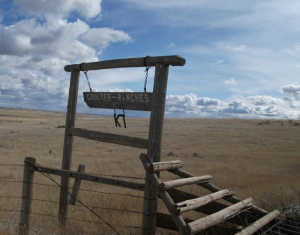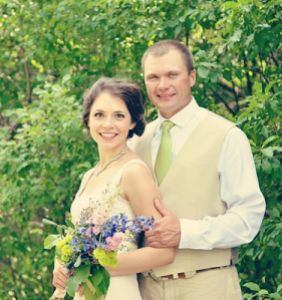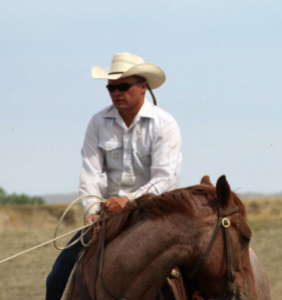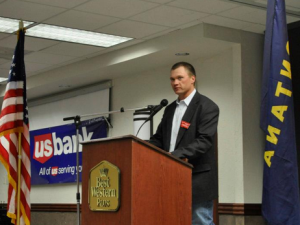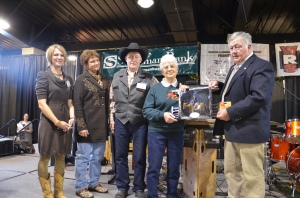Montana ranch women featured in new iBook
 Continuing coverage from the release of our new book, Ladies and Livestock, the following is an article by Amanda Radke for Tri-State Livestock News. The book is now available exclusively on iTunes for $14.99. Click here to go to the store.
Continuing coverage from the release of our new book, Ladies and Livestock, the following is an article by Amanda Radke for Tri-State Livestock News. The book is now available exclusively on iTunes for $14.99. Click here to go to the store.
Grit and grace, boots and biscuits, flowers and financial plans. The term “ranch woman” evokes countless images, memories and thoughts for the livestock community. Ladies that literally grow the food to feed their families and the world can often tend to a fussing baby just as handily as sorting off a waspy fence-crawling bull. Multi-talented doesn’t seem like a big enough word to describe the ranch gals of the west that hold their families and business operations together.
“During my travels to Montana ranches, one theme became evident as I visited Montana Stockgrowers Association members’ operations,” said author Lauren Chase. “The ladies on the ranch were often described by their family as ‘the backbone’ of the place. We wanted to honor this and all the work the women do by sharing their stories in ‘Ladies and Livestock.’ Often, the ladies have many roles, and we want the public to understand how each of these roles helps make the ranch successful.”
Besides being a writer, Chase is also a photographer and former multimedia outreach specialist for the MSGA. She released a new e-book entitled, “Ladies and Livestock” on Oct. 1. Available exclusively on iTunes, Chase takes a tour of rural Montana and introduces readers to the ladies of Montana and their roles on the ranch.
Chase is no stranger to advocating for agriculture through social media. She brings a rancher’s world to life through photographs, which she shares on online platforms like Facebook. She believes this outreach is critical to bridging the gap between urban and rural America.
“I believe that consumers, in general, have no idea how much work it takes to get beef on their plates,” said Chase. “Even more so, they don’t know how much work the women do on any ranch or farm to help make that possible. I was really interested in sharing that information, but also, making the connection between women on the ranch and women in the city though shared experiences, like raising a family.”
The women in the book come from all walks of life, but each has a shared passion for agriculture, which Chase captures in her storytelling.
For example, one of the women featured in the e-book is Chaley Harney, who works as the executive director for the Montana Beef Council. Raised in Red Lodge, Harney traveled the country before finding her way back to her home state to work for the beef council. In her travels, she worked for the California Cattlemen’s Association followed by a job at a remote cow camp in the high desert of northern Nevada, where she met her husband, Deeth Harney.
“I guess I have always been enamored with agriculture,” said Harney. “The satisfaction that comes from working on the land and providing for others is deeply gratifying. Not to mention the contentment that comes with a day full of physical labor.”
Harney says she is humbled to be included in the book, which features “a strong force of women in the West.”
“The book ‘Ladies and Livestock’ shares the passion and commitment of women in agriculture,” said Harney. “As wives, mothers, sisters and daughters, these women represent a glimpse into a day in their life and exude their appreciation for the ranching heritage that allows them to raise their families where they love to live and work. This book also provides a look into the business of ranching and the family that ties it all together. I am honored to be included as part of this book to help further broadcast the Montana families that work every day to provide a nutritious, complete source of protein for the world to enjoy.”
Although Chase didn’t come from an agricultural background, she says she’s fascinated with learning more about the ranching lifestyle and was surprised to discover that ranching wasn’t just a man’s job; there are plenty of women involved in beef production, too.
“Readers will be surprised by the young women that are dedicating their life to working on the ranch,” said Chase. “Before I got involved in agriculture, I thought that kind of work was for older men, but I couldn’t have been more wrong! It’s inspiring to see women my age (25) who are passionate about working cows and raising kids to do the same.”
Flipping through the photographs featured in “Ladies and Livestock,” it’s quite evident that Chase has captured the heart and soul of these women of the West.
“Women in agriculture are not only sweet and loving, but they are tough and their work ethic is unlike any other,” said Chase. “If the job needs done in negative 20 degrees, they don’t fuss about having to do it. They are there when their families and neighbors need them – willing to cook a meal out of love for anyone who is hungry and then head out to ride through hundreds of acres of pasture. They are truly inspiring.”
Another woman featured in the e-book is Rachel Endecott, PhD, Extension beef/cattle specialist at Montana State University (MSU). Endecott grew up on a family cow-calf operation near Ennis. In addition to her Extension work, she teaches the 400-level beef cattle management class at MSU, serves as an advisor for the Collegiate Stockgrowers Club, and was recently appointed the MSU Extension Ag and Natural Resources Program Leader. She runs cattle on shares with her family back in Ennis and goes home in her spare time to help with the operation.
“Agriculture has made me what I am,” said Endecott. “I feel a deep sense of responsibility to do all I can to help the beef cattle ranching way of life continue. Food production is not faceless – real people are involved in every step from farm to fork and pasture to plate. Our consumers want to know about those real people and what they do; I want to help tell their story and do what I can to help them stay on the ranch to keep telling that story for generations to come.”
Endecott was featured alongside her mother, whom she calls her best friend. Her father was featured in Chase’s first coffee table book, “Big Sky Boots: Working Seasons Of A Montana Cowboy,” which was released in 2012.
“It’s fun to have the entire family be included in these two books,” said Endecott. “It’s exciting to be included in this latest book. I’m honored to call many of those featured my friends. Several of those ladies I’ve known since college and it’s fun to see all the different things we’ve accomplished in our lives.”
While women in agriculture are the minority, Endecott said what makes them special is “a unique combination of work ethic, determination, and compassion.”
“This book is an authentic, honest look at the life and times of ranching women – what more compelling subject could you find?” she added.
Although Chase didn’t follow the format of a coffee table book like her last published work, she hopes to reach a new audience – particularly consumers – in her latest release.
“This book was developed for the general public,” said Chase. “Millions of people across the world have iPads and can download the digital book in minutes. What’s unique about the book is that on some of the pages there are videos that readers can click ‘play’ and watch interviews with the women on their ranches. This format is an easy way for us to get outside of the ‘agriculture box.’”



























